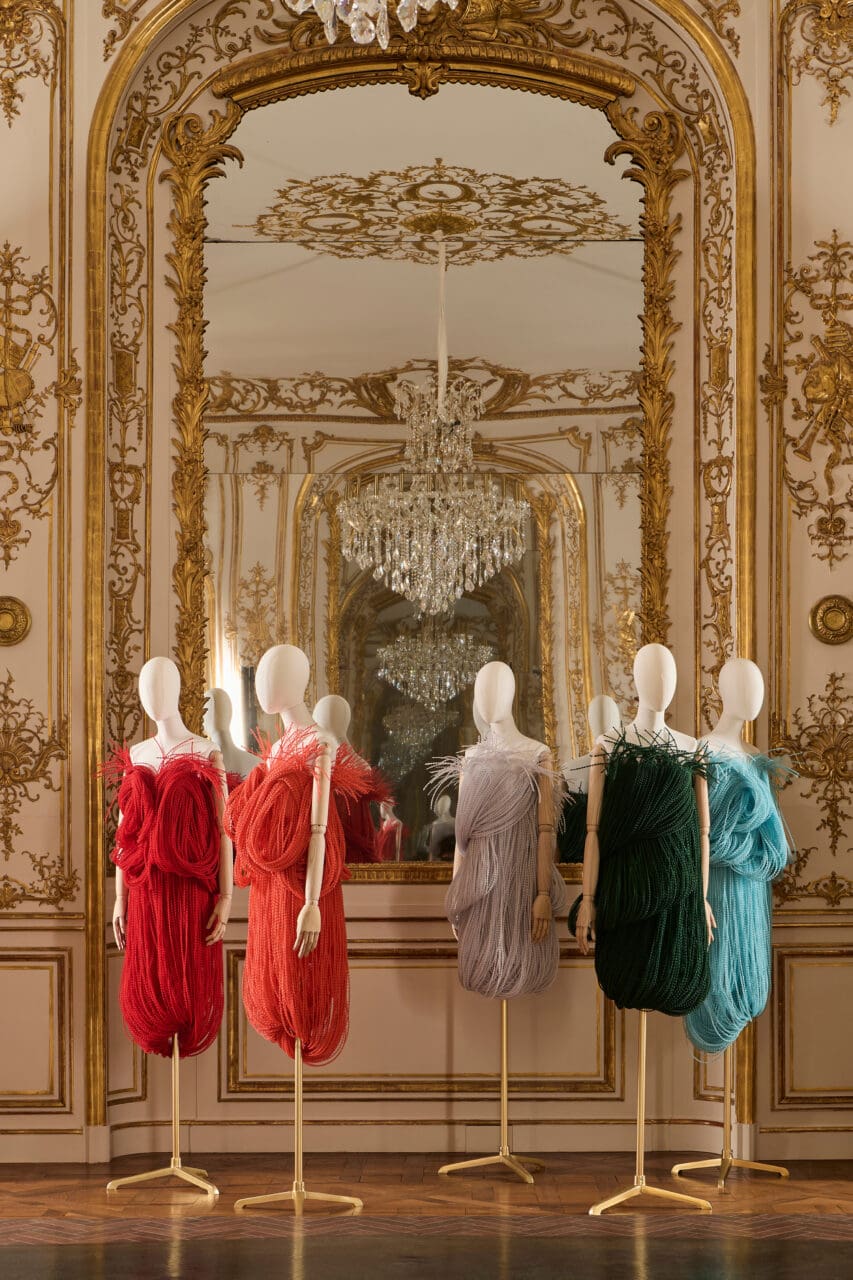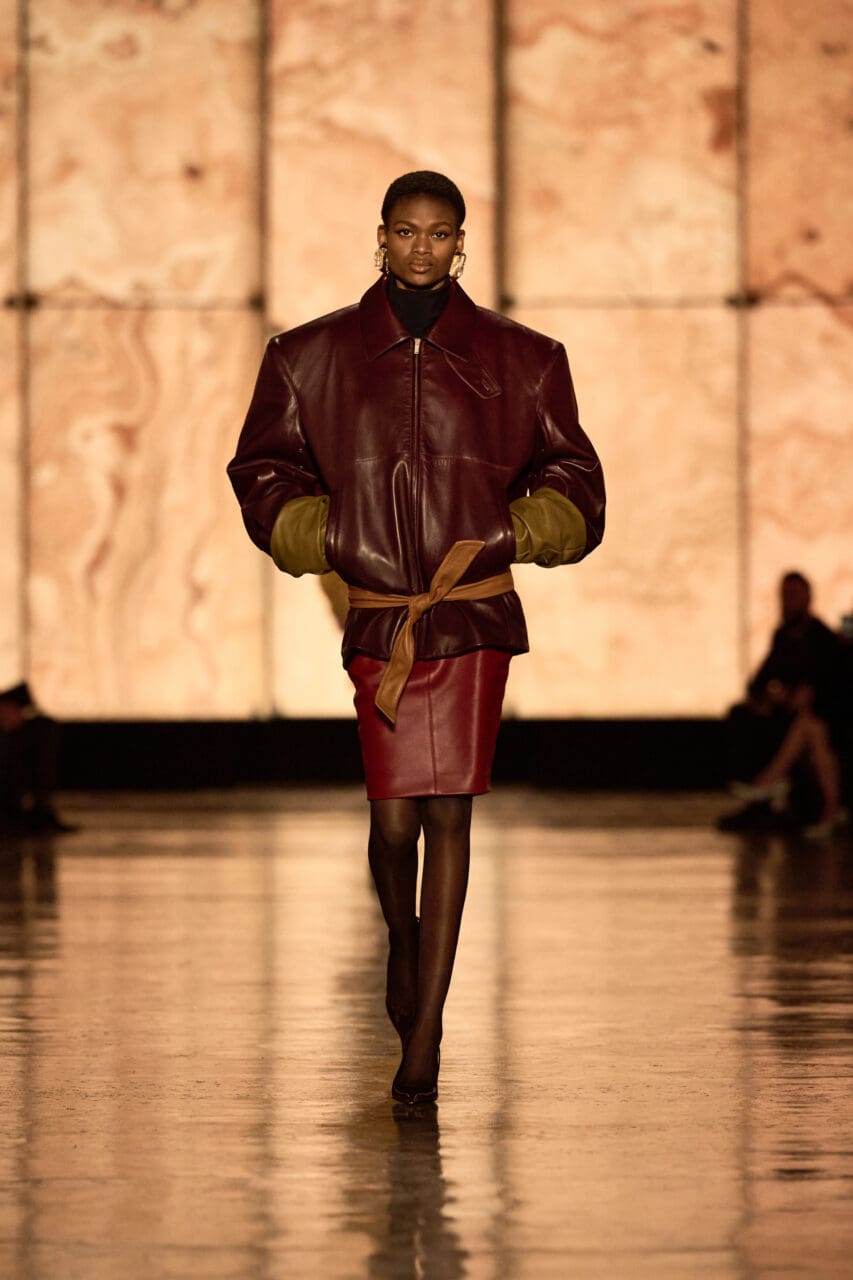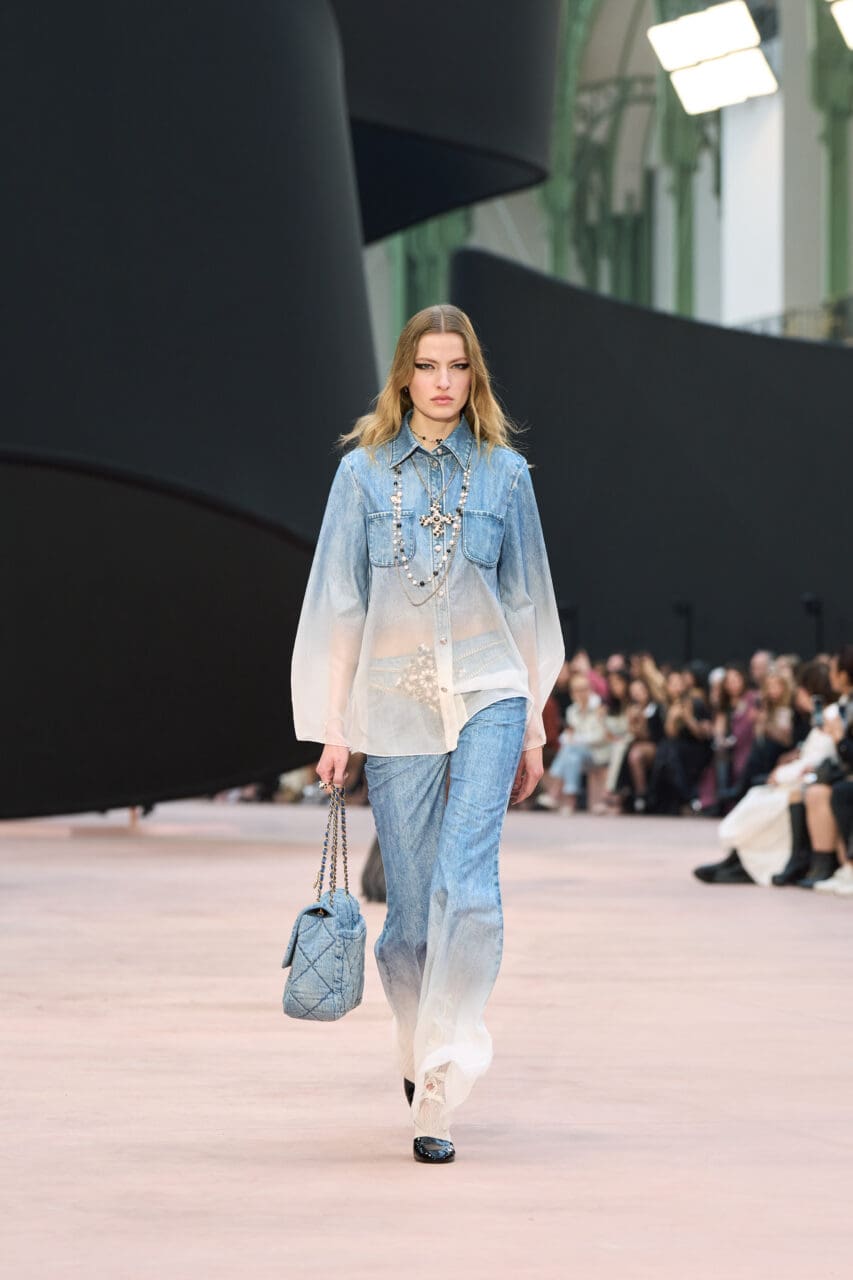Pierpaolo Piccioli is devoted to making haute couture relevant in a progressive world. Through his Valentino collections, he strives to make fashion’s most elitist corner reflective of the inclusive values of new generations, so that everyone can mirror themselves in its image. After years of infusing his collection with diversity, this season Piccioli embraced body awareness. He changed his entire approach to haute couture from the cutting board through sketching and draping his creations on people of different body types and ages. From fabrics to surface decorations, he created each garment according to the proportions of their bodies. It painted a contrast to the way couture usually works where a garment is created on a typically skinny silhouette and later scaled up or down according to the body of the client who buys it. During a preview in Valentino’s salons on Place Vendôme, Piccioli told British Vogue’s fashion critic Anders Christian Madsen why this process was so important to him.
How was your process different this season?
“When you do couture, you have the house model. And you apply the body of the house model to 50 or 60 models on the runway. I wanted to break these rules and embrace the idea of different proportions of body, different sizes, different ages. But it was impossible to do this with just one house model. So, I broke the rules and got 10 house models with differently proportioned bodies.”
What drove this decision?
“I don’t think haute couture belongs to the past. I think it can be relevant today if it stays focused on modernity. For me, the modernity of couture doesn’t mean the modernity of beauty, because beauty is beauty. But it means that the approach is different. You embrace humanity.”
How did you go about it?
“I started the collection studying the canons of eras and ages. Since the Middle Age, there has always been a canon of beauty. Now, you cannot have canons. Humanity is the canon. Everything is valid. So, in order to defeat this idea of couture belonging to the past, I couldn’t work with one house model.”
Haute couture is made-to-measure. How is this collection different?
“When you sell couture, you adapt it to the person. When you rethink the process, you start facing a different body. When you study a body, it can be scientific, romantic or sexual. The three of them are close. And this way, it’s more human.”
What was the process like for you?
“It was about studying the process, not adapting the status to different proportions. For me, it was a very interesting process, because we got to create new silhouettes. When the atelier saw the different body proportions, it was like they were looking at new silhouettes.”
What was your objective?
“I wondered if the classic idea of couture – the Cecil Beaton, the salons – could have different ranges of women with different proportions with different ages giving the same beauty, and giving them dignity? Because that’s important. It’s really important today to talk about body awareness.”
Do you think this has been missing in fashion?
“In runway shows, sometimes there are 50 skinny models and one bigger sized. I feel like you don’t really relate to that. You don’t believe that. You just tick the box. Sometimes when I see models of different proportions on the runway, they don’t have the same magic. That was the best: to give them the same emotion; the feeling of couture.”
Anohni wrote the soundtrack for the show. What was your brief?
“She was very aware of this: the awareness of the body. That’s what we talked about: giving dignity to these bodies. That was a very important theme for her.”
Can you elaborate on the idea of a beauty canon founded in humanity?
“What I want to deliver is the idea that any canon is valid. In the ’30s you had to be long and thin, in the ’40s you have to be more horizontal with big shoulders, the ’50s were about softness, the ’60s were shorter and smaller and more nervous bodies, the ’70s brought again an elongated and kind of masculine body, the 80s had the big shoulders and boobs again, the ’90s had minimalism. And then plastic surgery…”
How do you feel about this plastic surgery era?
“I don’t think the idea of trying to look like someone else is interesting. After [the rise in] plastic surgery, I think we all felt the urgency of talking about diversity and awareness of our bodies and different proportions of gender, sizes, cultures, identities. Once we had enough of all the canons, we discovered that humanity is the only canon that’s valid. Freedom. Be yourself. That’s the real canon.”
What message would you like to convey to people with this cast and process?
“It could deliver a strong message for young people who are struggling with something. If she’s beautiful, you can be beautiful.”
Editor
Anders Christian MadsenCredit
Photography: Alessandro Lucioni / Gorunway.com









